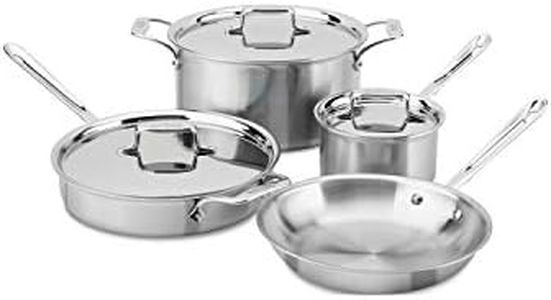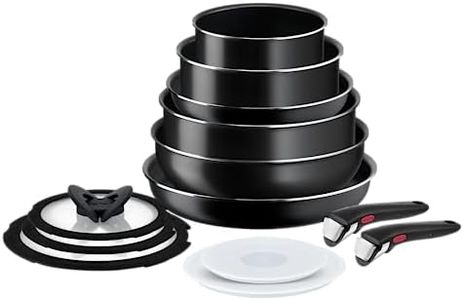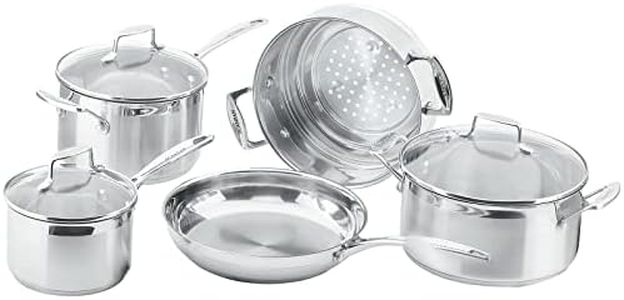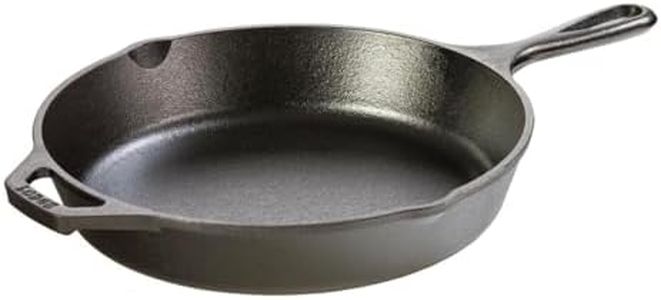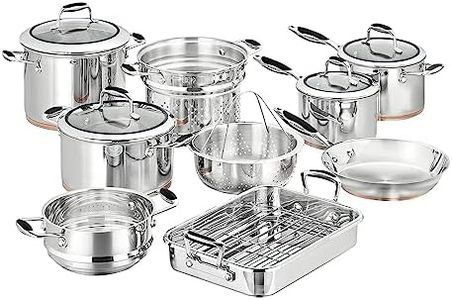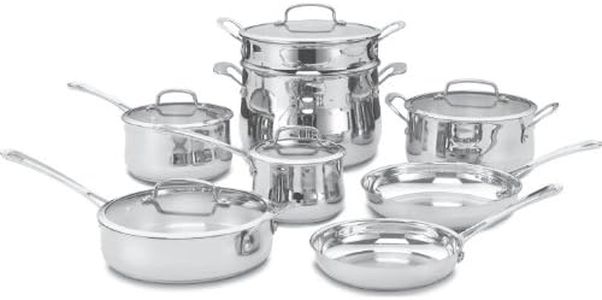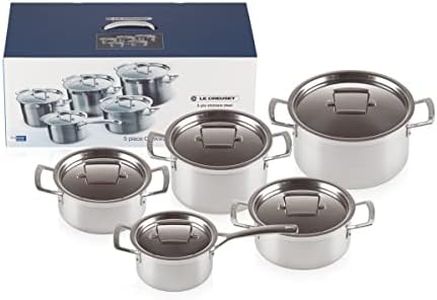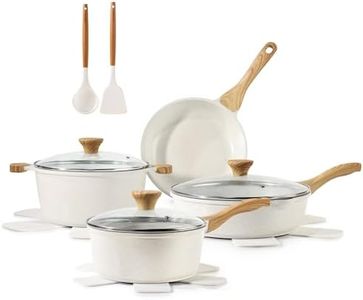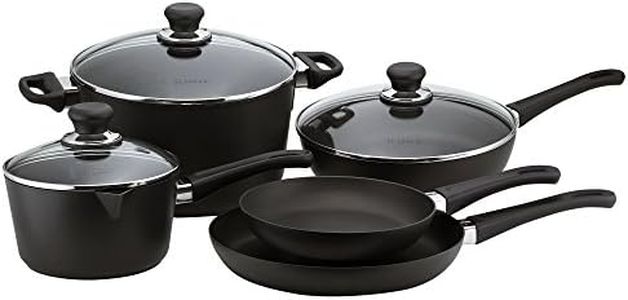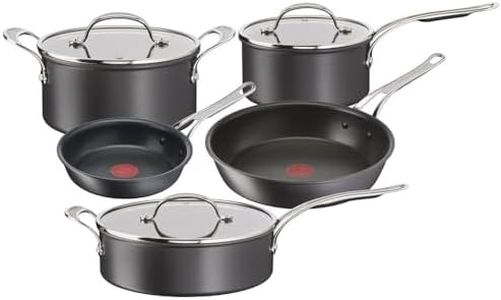We Use CookiesWe use cookies to enhance the security, performance,
functionality and for analytical and promotional activities. By continuing to browse this site you
are agreeing to our privacy policy
10 Best Cookware Sets For Gas Stoves
From leading brands and best sellers available on the web.Buying Guide for the Best Cookware Sets For Gas Stoves
Choosing the right cookware set for gas stoves is important to make sure you get the best cooking experience without damaging your pots and pans. Gas stoves heat quickly and can create hot spots, so it's helpful to select cookware that heats evenly and can endure rapid temperature changes. Start by thinking about the types of food you cook most often and the number of people you generally serve. Also consider how easy the cookware will be to clean, and the kind of handles or lids you prefer. Selecting the right set will make everyday cooking simpler and more enjoyable.MaterialThe material influences how evenly the cookware heats, how durable it is, and how easy it is to care for. Common materials include stainless steel, aluminum, copper, cast iron, and nonstick coatings. For gas stoves, metals that conduct heat fast and distribute it evenly work best; stainless steel often has an aluminum or copper core for this reason. Cast iron is very durable and holds heat well but is heavier and needs seasoning. Nonstick options are great for easy cleanup but may be less durable over high flame. Think about your priorities: even cooking and searing (cast iron or fully-clad stainless steel), lightweight use and quick cleanup (aluminum or nonstick), or long-term durability (high-quality stainless steel). Pick the material that matches the way you prefer to cook and clean.
Base ConstructionThe base (or bottom) of the cookware has a huge impact on how well heat is distributed and how much control you have. Thick, layered, or ‘clad’ bases are better at spreading heat evenly and preventing warping on high gas flames. Simple, thin bases may heat too quickly and produce hot spots. Look for words like 'fully clad,' 'impact-bonded base,' or 'encapsulated base' if you want the best results for varied cooking styles. If you do only simple, low-heat tasks, a thinner base may be enough, but for searing, frying, or simmering, a thick, sturdy base is better suited for a gas stove.
Piece Count and TypesCookware sets can range from basic (a few pots and pans) to comprehensive (including various sizes and extra items like lids, utensils, or specialty pots). Think about the dishes you cook most: if you often make soups, stews, or pastas, make sure you have a large pot or Dutch oven. If you fry or sauté, ensure your set has a few skillet sizes. Avoid simply choosing the largest set – aim for pieces you'll actually use regularly. List your 'must-have' pieces to guide your choice.
Handle and Lid DesignGood handles make cookware easier and safer to use, especially over an open flame. Look for sturdy, riveted handles that stay cool and are comfortable to hold. Some sets have oven-safe handles, which allow you to finish dishes in the oven. Lids are often glass (so you can see your food cooking) or metal (better for high heat and durability). Consider what's most appealing: if you want to watch your food, choose glass lids; if you want to use the oven, make sure both lid and handle can withstand high temperatures.
Maintenance and CleaningSome cookware requires more care, like regular seasoning for cast iron, while others (like stainless steel or nonstick) are low maintenance. Dishwasher-safe pots and pans save cleaning time, but hand-washing generally extends life. Think about your willingness and ability to perform any upkeep, and whether you'll use a dishwasher or not. If you want to avoid extra work, aim for easy-clean surfaces like nonstick or dishwasher-safe stainless steel.
Weight and HandlingCookware comes in different weights, and heavier pots and pans often mean better heat retention and durability. However, heavy cookware can be hard to move, lift, or wash, especially when full of food. If you have strength or mobility concerns, lean toward medium-weight cookware that still feels sturdy. If you value professional-level results and don't mind the extra heft, cast iron or thick stainless steel might suit you better.
